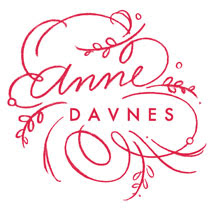
This is a recent proposed logo I did for Malachi's Storehouse, a food kitchen to feed the hungry.
Below are some details of the history of the hand, why it was chosen, and why the u served as a metaphorical and visual portal.
The calligraphic hand chosen for this logotype is called Blackletter. It's what Gutenberg set his first printed copy of the bible in and is also what the monks used so long ago when illuminating manuscripts on vellum.
Blackletter today has many variations to ease in its legibility and to suit each artist's creative flow. It's typically seen as very tall and blocky and monks used it because ink was less expensive than vellum. They could cram in as much text as possible on the page, while still emoting a message. It was beautiful looking, but at times difficult to read. This particular variation has a softer, rounder, more horizontal, and fluid feel. It's masculinity is balanced by an equally strong feminine flow and swing - look at the tails and endings to the ascenders and descenders.
My variation features a strong vertical mass for each letterform and most are linked together to give a very strong feeling of interconnectedness and unity. This is how I see Malachi's Storehouse and the parish. The letterforms also remind me very much of the architectural style of Saint Patrick's. Grounded, earthy, solid, reaching upward, but with a horizontal flow that echoes the inner flow of the building.
I chose to extend the u in house and make it appear as a threshold, entrance and exit - it is the very idea that Malachi's is a place to give and receive and both apply to all involved. It is a conduit. This threshold is also a metaphor for the altar, where time and space intersect. And it is also the space within each of us where the capacity for generosity both in giving and receiving live. It is one of Saint Patrick's unique talents and each person/letterform stand united in this idea. The letterforms are all unique, yet linked and holding hands. The tail of the e also gives a major nod to it's ancient Christian roots and purpose.


3 comments:
This is outstanding! So lively, and such attention to detail. Thank you for sharing it, and for the accompanying explanation.
Thank you Jody!
Post a Comment